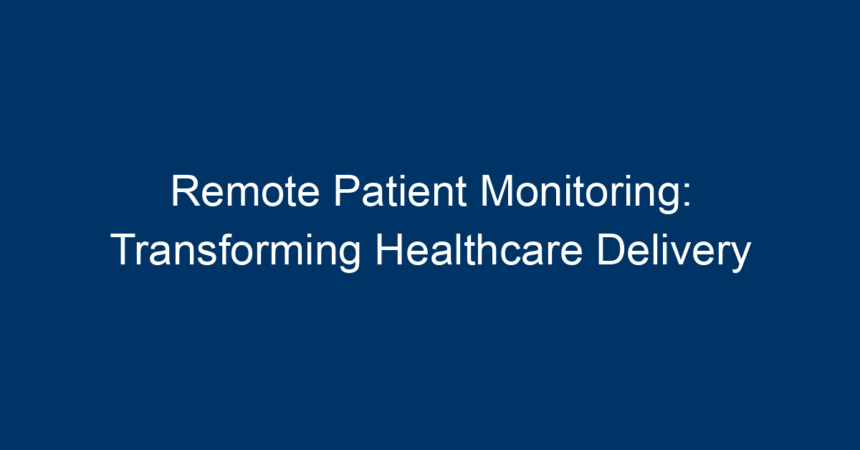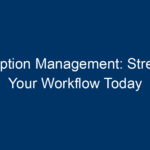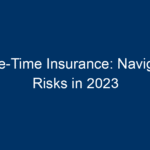Introduction
In an era defined by rapid technological advancements, healthcare is experiencing a seismic shift. One of the most significant innovations shaping this transformation is remote patient monitoring (RPM). This technology enables healthcare providers to track patients’ health data in real time, allowing for more personalized care, reduced hospital visits, and improved health outcomes. But what does this mean for patients, healthcare professionals, and the industry at large? Let’s explore the ins and outs of remote patient monitoring and its transformative effects on healthcare delivery.
What is Remote Patient Monitoring?
Remote patient monitoring refers to the use of technology to monitor patients’ health parameters outside of traditional clinical settings. This may include tracking vital signs such as heart rate, blood pressure, glucose levels, and more, using wearable devices, smartphone apps, or telehealth systems. The data collected is transmitted to healthcare providers who can analyze it to make informed decisions about patient care.
Key Features of Remote Patient Monitoring
-
Real-Time Data Tracking
RPM allows for continuous monitoring of health metrics, ensuring immediate notification of any abnormalities. -
Patient Engagement
Many RPM systems include platforms designed for patient interaction, encouraging them to take an active role in their health management. - Data Integration
RPM systems often integrate with electronic health records (EHR), providing a comprehensive view of a patient’s health history.
How Remote Patient Monitoring Works
Remote patient monitoring uses various technologies to collect health data. Let’s break this down into a few essential components:
1. Wearable Devices
Wearable technology, such as smartwatches and fitness trackers, has gained immense popularity. Many of these devices are equipped with sensors that record a variety of health metrics. For example, devices like the Apple Watch monitor heart rate, blood oxygen levels, and even ECGs.
2. Mobile Health Apps
Mobile applications provide a platform for patients to enter their health data manually or receive automated data from their wearable devices. These apps often feature reminders for medication, tips for healthy living, and prompts for regular check-ins with healthcare providers.
3. Telehealth Platforms
Telehealth solutions allow healthcare providers to communicate with patients via video calls or messaging. They can review the data collected through RPM and offer personalized care plans without the need for in-person visits.
Benefits of Remote Patient Monitoring
Remote patient monitoring provides numerous benefits for both patients and healthcare providers:
1. Improved Access to Care
RPM breaks down geographical barriers, allowing patients in rural or underserved areas to receive quality care. Patients can consult with specialists without needing to travel long distances.
2. Early Detection of Health Issues
With continuous monitoring, potential health issues can be identified and addressed earlier, preventing complications. For instance, consistent blood sugar monitoring can alert healthcare providers to potential diabetes complications before they escalate.
3. Cost-Effective Care
By reducing the number of unnecessary hospital visits and emergency room admissions, RPM can significantly decrease healthcare costs. Patients benefit financially, and healthcare systems can allocate resources more effectively.
4. Enhanced Patient Engagement
RPM encourages patients to take a more active role in their health management. With easy access to their health data through apps and devices, patients are more motivated to adhere to treatment plans and make lifestyle changes.
5. Chronic Disease Management
Patients with chronic conditions, such as diabetes and heart disease, benefit immensely from RPM. Continuous monitoring allows healthcare providers to adjust treatment plans in real time, ensuring that patients remain stable.
Challenges and Considerations
While remote patient monitoring offers numerous benefits, there are challenges that need to be addressed:
1. Data Privacy and Security
The collection and transmission of personal health data raise critical questions about data privacy and security. Organizations must ensure that their RPM solutions are compliant with regulations like HIPAA (Health Insurance Portability and Accountability Act) to protect sensitive information.
2. Technical Limitations
Not all patients are tech-savvy, and disparities in technology access can hinder the effectiveness of remote patient monitoring. Education and support are essential for both patients and healthcare providers to maximize the benefits of RPM.
3. Cost of Implementation
Although RPM can save money in the long run, the initial costs associated with implementing these systems can be high. Healthcare organizations need to carefully weigh the costs against the anticipated benefits.
Future Trends in Remote Patient Monitoring
As technology continues to evolve, the future of remote patient monitoring looks promising:
1. Artificial Intelligence and Machine Learning
Integrating AI and machine learning into RPM systems can enhance data analysis, enabling predictive analytics to foresee potential health events based on individual patient data.
2. Integration with IoT Devices
The Internet of Things (IoT) will play a crucial role in facilitating smart home health solutions. Smart home devices can work in conjunction with RPM systems to create a comprehensive health ecosystem.
3. Expansion of Telehealth Services
As telehealth continues to grow, the integration of RPM with telehealth platforms will become increasingly seamless. This combination will provide a holistic approach to patient care.
Conclusion and Actionable Insights
Remote patient monitoring is revolutionizing healthcare delivery, offering numerous benefits such as enhanced access to care, improved patient engagement, and better chronic disease management. However, challenges like data privacy and costs must be addressed to maximize its effectiveness.
Here are some actionable insights:
-
Healthcare Providers: Invest in reliable RPM technology and ensure staff is trained on its use. Regularly review and analyze patient data for proactive care.
-
Patients: Engage actively with your health data. Use RPM tools to track your health, communicate with your providers, and adhere to treatment plans.
- Policy Makers: Support regulations that enhance the security of health data and encourage the adoption of RPM technologies across the healthcare system.
In summary, as remote patient monitoring continues to advance, it holds the potential to transform healthcare into a more accessible, cost-effective, and patient-centered model, paving the way for healthier communities and improved quality of life.




